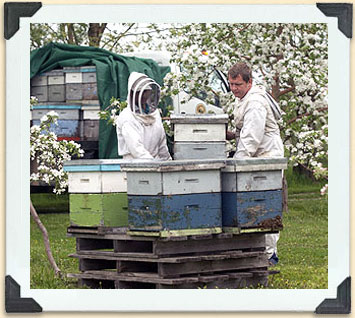The Keeper

Unloading hives in an orchard.
© Ontario Beekeepers' Association, Technology Transfer Program
Hives for Hire
Many farmers, recognizing the important role that bees play in pollination, rent beehives to ensure the best pollination of their fruit and other crops. Their crops are too valuable to be dependent on wild pollinators alone. Growers look at the number of flowers they have in their fields or orchards in order to determine how many hives they need for optimum pollination.
Beekeepers who rent out their bee colonies for pollination may move their hives several times to accommodate the different flowering times of various crops. They may even move hives across provinces.





